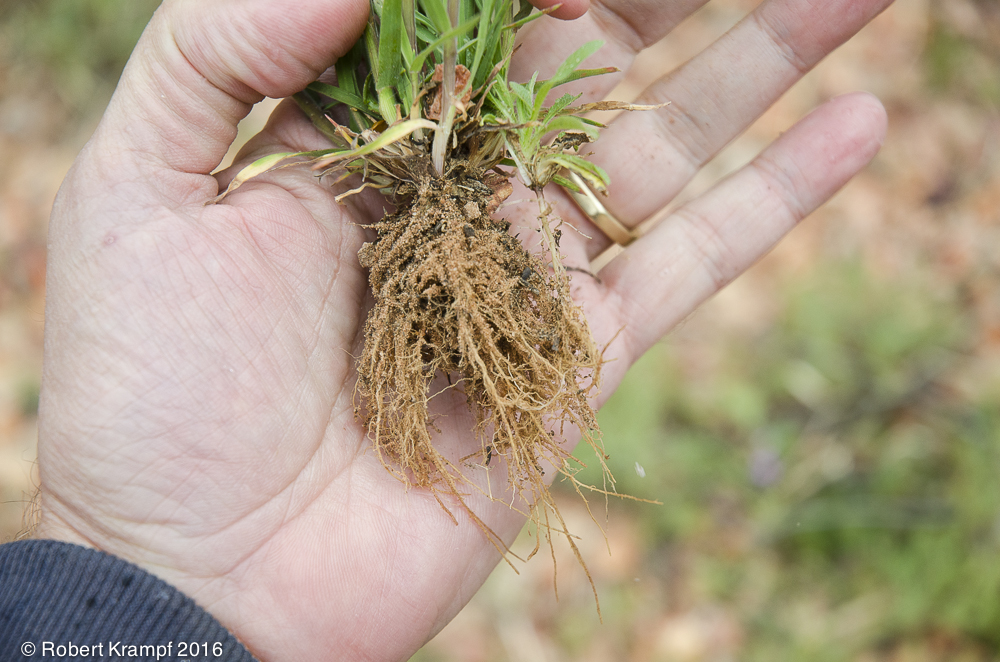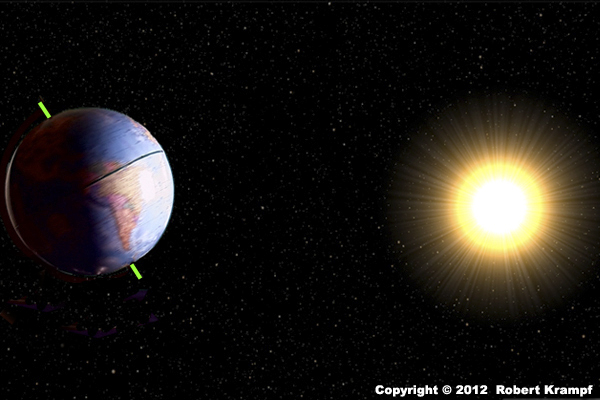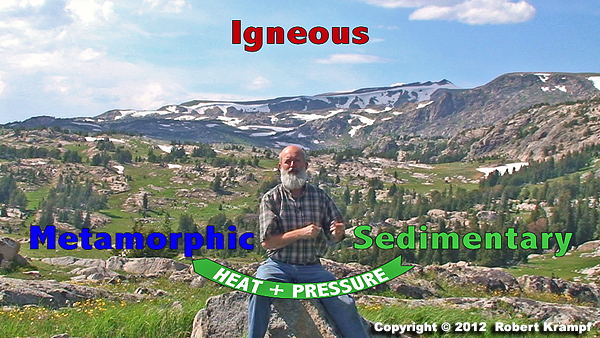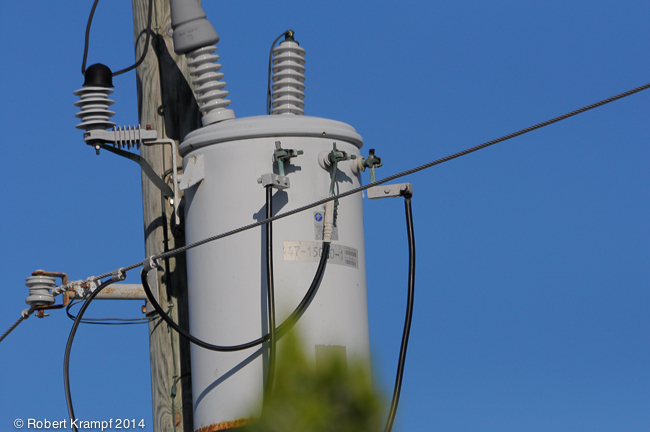Here are some science questions to help you test your general science knowledge. They will also show you which of the Florida, Utah, and NGSS science standards each question is testing.
The questions are chosen randomly, so this quest will be different each time.
Get 5 more random questions.
Would you rather see the most recently added questions?

Which part of your body comes closest to serving the same function as a plant's roots?
-
Mouth
Yes! The main functions for most plant roots is to anchor it in place and to take in water and nutrients from the soil. We do not need anything to anchor us in one place, but we use our mouth to take in water and nutrients. -
Feet
No. A plants roots anchor into in place, keeping it from moving. Your feet do not do that. -
Lungs
No. A plant takes in air through its leaves, not through its roots. -
Skeleton
No. Your skeleton supports your body and protects your organs. In plants, this is done by the cell walls. The cell wall around each cell of a plant make it stiff, supporting stems, leaves, flowers, and other parts of the plant.
Click to see which state standards this question tests, and which of my videos, experiments, and other resources support that topic.
Florida
SC.3.L.14.1 Describe structures in plants and their roles in food production, support, water and nutrient transport, and reproduction.
| Pumpkin Guts | video, free, ClosedCaptions, checked |
| Measuring Photosynthesis | video, checked |
| Seed Search | video, ClosedCaptions, checked |
| Orange Slices | video, ClosedCaptions |
| Testing a Leaf for Starch | video, ClosedCaptions |
| Flowers | video, ClosedCaptions |
| Heartless Plants | video, ClosedCaptions, checked |
| Smell the Flowers | text page |
| Review Plants-3 | practice |
| Review Plants-2 | practice |
| Review Plants-5 | practice |
| Review Plants-6 | practice |
| Review Plants-7 | practice |
| Review Plants-8 | practice |
SC.4.L.16.1 Identify processes of sexual reproduction in flowering plants, including pollination, fertilization (seed production), seed dispersal, and germination.
| Seed Search | video, ClosedCaptions, checked |
| Orange Slices | video, ClosedCaptions |
| Flowers | video, ClosedCaptions |
| Pumpkin Guts | video, free, ClosedCaptions, checked |
| Review Plants-3 | practice |
| Review Plants-2 | practice |
| Review Plants-6 | practice |
| Review Plants-7 | practice |
| Review Plants-8 | practice |
SC.5.L.14.2 Compare and contrast the function of organs and other physical structures of plants and animals, including humans, for example: some animals have skeletons for support — some with internal skeletons others with exoskeletons — while some plants have stems for support.
| Reading a Skeleton | video, free, checked |
| Orange Slices | video, ClosedCaptions |
| Bird Bones | video, free |
| Thoughts on an Exoskeleton | text page, free |
| Review Plants-5 | practice |
| Review Plants-6 | practice |
| Review Plants-7 | practice |
Utah
UT.6.V.1.b Compare characteristics common in observed organisms (e.g., color, movement, appendages, shape) and infer their function (e.g., green color found in organisms that are producers, appendages help movement).
| Onion Crystals | video |
| A Walk in the Park | video, checked |
| Selective Smelling | video, checked |
| Thoughts on an Exoskeleton | text page, free |
| Review Adaptation-3 | practice |
| Review Adaptation-4 | practice |
| Review Plants-5 | practice |
| Review Plants-6 | practice |
| Review Adaptation-5 | practice |
| Review Plants-7 | practice |
| Review Adaptation-6 | practice |
UT.7.IV.2.d Relate the structure of organs to an organism’s ability to survive in a specific environment (e.g., hollow bird bones allow them to fly in air, hollow structure of hair insulates animals from hot or cold, dense root structure allows plants to grow in compact soil, fish fins aid fish in moving in water).
| Bendable Bones | video, checked |
| Calling a Woodpecker | video, checked |
| Selective Smelling | video, checked |
| Seed Search | video, ClosedCaptions, checked |
| Orange Slices | video, ClosedCaptions |
| Flowers | video, ClosedCaptions |
| Onion Crystals | video |
| Hunting with an Umbrella | video, free, ClosedCaptions, Updated |
| Thoughts on an Exoskeleton | text page, free |
| Review Plants-5 | practice |
| Review Plants-6 | practice |
| Review Plants-7 | practice |
NGSS
MS-LS1-1 Conduct an investigation to provide evidence that living things are made of cells; either one cell or many different numbers and types of cells.
| Microscopes: Making a Wet Mount | video, learnalong, checked |
| Microscopes: Making a Dry Mount | video, learnalong, checked |
| Microscopes: Making a Hay Infusion | video, free, learnalong, checked |
| 901 | photo challenge, free |

When this traffic jam starts moving, the cars will be able to speed up faster than the big trucks. Why?
-
The cars have more powerful engines.
No. The trucks have more powerful engines than the cars do. -
The cars have tires with more friction.
No. The truck tires are larger, which means they have more contact with the ground, and more friction. -
The cars weigh less.
Yes! The heavier an object is (the more mass it has), the more force it takes to move it. The trucks weigh a lot more than the cars, so it takes much more energy to get them moving. -
The cars are more streamlined
No. A streamlined shape helps when the cars are moving quickly, but does not do much as they are starting up.
Click to see which state standards this question tests, and which of my videos, experiments, and other resources support that topic.
Florida
SC.5.P.13.3 Investigate and describe that the more mass an object has, the less effect a given force will have on the object's motion.
| Water in a Glass, part 3 | video, checked |
| Water in a Glass, part 1 | video, checked |
| Obedient Coin | video, checked |
| Wrong Way Balloon | video, checked |
| High Bounce | video, checked |
| The Difference Between Weight and Mass | video, checked |
| Water in a Glass, part 2 | video, checked |
| Review Force and Motion-1 | practice |
| Review Force and Motion-2 | practice |
Utah
UT.3.III.2.b Compare and chart the relative effects of a force of the same strength on objects of different weight (e.g., the breeze from a fan will move a piece of paper but may not move a piece of cardboard).
| Water in a Glass, part 3 | video, checked |
| Water in a Glass, part 1 | video, checked |
| High Bounce | video, checked |
| Floating Cups | video, checked |
| Water in a Glass, part 2 | video, checked |
| Review Force and Motion-1 | practice |
| Review Force and Motion-2 | practice |
NGSS
MS-PS2-2 Plan an investigation to provide evidence that the change in an object’s motion depends on the sum of the forces on the object and the mass of the object.
| The Difference Between Weight and Mass | video, checked |
| Torque | video |
| Water in a Glass, part 2 | video, checked |
| Water in a Glass, part 3 | video, checked |
| Water in a Glass, part 1 | video, checked |
| Newton's First Law of Motion | video, ClosedCaptions |
| Obedient Coin | video, checked |
| Wrong Way Balloon | video, checked |
| Strange Flame, part 2 | video, checked |
| Strange Flame, part 1 | video, checked |
| Science Friction | video, checked |
| Raw Egg or Boiled? | video, checked |
| More Science of Balance | video, checked |
| Science of Balance | video, checked |
| Bernoulli Effect | video |
| The Old Tablecloth Trick | video |
| Smoke Rings | video |
| Floating Cups | video, checked |
| Balancing a Meter Stick | text page |
| Review Force and Motion-4 | practice |
| Review Force and Motion-1 | practice |
| Review Force and Motion-2 | practice |

The Earth stays in orbit around the Sun because:
-
The Sun's gravity pulls on the Earth
This is only part of the answer. -
The Earth's gravity pulls on the Sun
This is only part of the answer. -
The gravity of the Sun and the Earth pull on each other
Yes! The gravitational attraction between the Earth and the Sun is a result of both the Sun pulling on the Earth and the Earth pulling on the Sun. -
Gravity does not keep the Earth in its orbit.
No. Without the pull of gravity, the Earth would continue moving in a straight path instead of curving around the Sun.
Click to see which state standards this question tests, and which of my videos, experiments, and other resources support that topic.
Florida
SC.5.P.13.1 Identify familiar forces that cause objects to move, such as pushes or pulls, including gravity acting on falling objects.
| Magic Coin | video |
| Making a Compass | video, checked |
| Torque | video |
| Water in a Glass, part 2 | video, checked |
| Water in a Glass, part 3 | video, checked |
| Water in a Glass, part 1 | video, checked |
| Obedient Coin | video, checked |
| The Slow Race | video, free, ClosedCaptions, Updated |
| Balancing a Meter Stick | text page |
| Review Space-13 | quest |
SC.8.E.5.9 Explain the impact of objects in space on each other including: 1. the Sun on the Earth including seasons and gravitational attraction 2. the Moon on the Earth, including phases, tides, and eclipses, and the relative position of each body.
| Global Science | video, ClosedCaptions |
| Why is a Full Moon So Bright? | text page, free, checked |
| Review Space-13 | quest |
| Review Space-12 | practice |
SC.6.P.13.2 Explore the Law of Gravity by recognizing that every object exerts gravitational force on every other object and that the force depends on how much mass the objects have and how far apart they are.
| Water in a Glass, part 1 | video, checked |
| Planets and Pennies | video, ClosedCaptions |
| Force, Pressure, and Shoes | video, checked |
| Water in a Glass, part 2 | video, checked |
| Water in a Glass, part 3 | video, checked |
| Review Space-13 | quest |
Utah
UT.3.IV.2.c Pose questions about gravity and forces.
| Water in a Glass, part 3 | video, checked |
| Water in a Glass, part 1 | video, checked |
| Planets and Pennies | video, ClosedCaptions |
| Force, Pressure, and Shoes | video, checked |
| Water in a Glass, part 2 | video, checked |
| Balancing a Meter Stick | text page |
| Review Energy-8 | quest |
| Review Space-13 | quest |
UT.6.III.3.a Describe the forces holding Earth in orbit around the sun, and the moon in orbit around Earth.
| Review Space-13 | quest |
NGSS
MS-ESS1-2 Develop and use a model to describe the role of gravity in the motions within galaxies and the solar system.
| Planets and Pennies | video, ClosedCaptions |
| Review Space-13 | quest |
| Review Space-10 | practice |

As we look at the rock cycle, we can see that heat and pressure can change a sedimentary rock into a metamorphic rock. What would change a metamorphic rock into a sedimentary rock?
-
More heat and pressure
No. More heat and pressure would cause more metamorphic change. -
Erosion and deposition
Yes. If the rock was eroded and deposited, that would form a sedimentary rock. -
Melting and cooling
No. Melting the rock and then cooling it would produce an igneous rock. -
A metamorphic rock cannot become a sedimentary rock
No. In the rock cycle, a rock from any group (igneous, sedimentary, metamorphic) can be changed into a rock from any group.
Click to see which state standards this question tests, and which of my videos, experiments, and other resources support that topic.
Florida
SC.4.E.6.1 Identify the three categories of rocks: igneous, (formed from molten rock); sedimentary (pieces of other rocks and fossilized organisms); and metamorphic (formed from heat and pressure).
| Evaporites | video, learnalong, checked |
| Igneous Rocks and Bubbles | video, free, learnalong, Updated |
| Sedimentary Rocks | video, learnalong |
| What is a Rock? | video, learnalong, checked |
| Bioclastics: Rocks With No Minerals | video |
| Homemade Fossil Dig | text page |
| Foliated and Unfoliated Rocks | text page, learnalong |
| Identifying Igneous Rocks | text page, learnalong |
| Intrusive and Extrusive Igneous Rocks | text page, learnalong |
| Light and Dark Minerals | text page, learnalong |
| Review Rocks-2 | practice |
| Review Rocks-3 | practice |
| Review Rocks-4 | practice |
| Review Rocks-5 | practice |
| Review Rocks-6 | practice |
| Review Rocks-8 | practice |
| Review Rocks-9 | practice |
| Review Rocks-7 | practice |
| Review Rocks-10 | practice |
| Review Rocks-10 | practice |
| Review Rocks-10 | practice |
| Review Rocks-1 | practice |
SC.7.E.6.2 Identify the patterns within the rock cycle and relate them to surface events (weathering and erosion) and sub-surface events (plate tectonics and mountain building).
| Evaporites | video, learnalong, checked |
| What is a Rock? | video, learnalong, checked |
| The Rock Cycle | video, learnalong |
| Change: Fast and Slow | video |
| Erosion | video, checked |
| Continuous Change | video, checked |
| Bioclastics: Rocks With No Minerals | video |
| Weathering and Erosion | video, learnalong, checked |
| Review Rocks-4 | practice |
| Review Rocks-5 | practice |
| Review Rocks-6 | practice |
| Review Rocks-8 | practice |
| Review Rocks-9 | practice |
| Review Rocks-7 | practice |
| Review Rocks-10 | practice |
| Review Rocks-10 | practice |
| Review Rocks-1 | practice |
| Review Erosion-1 | practice |
| Review Erosion-2 | practice |
| Review Erosion-3 | practice |
| Review Erosion-4 | practice |
| Review Erosion-5 | practice |
Utah
UT.4.III.1.a Describe the differences between minerals and rocks.
| What is a Mineral? | video, checked |
| Identifying Minerals | video, learnalong |
| What is a Rock? | video, learnalong, checked |
| Bioclastics: Rocks With No Minerals | video |
| Definition of a Mineral | video, checked |
| Review Rocks-1 | practice |
| Review Rocks-4 | practice |
| Review Rocks-5 | practice |
| Review Rocks-6 | practice |
| Review Rocks-8 | practice |
| Review Rocks-9 | practice |
| Review Rocks-7 | practice |
| Review Rocks-10 | practice |
NGSS
4-ESS1-1 Identify evidence from patterns in rock formations and fossils in rock layers to support an explanation for changes in a landscape over time.
| Evaporites | video, learnalong, checked |
| Igneous Rocks and Bubbles | video, free, learnalong, Updated |
| Sedimentary Rocks | video, learnalong |
| Reading the Rocks: Law of Superposition | video |
| Reading the Rocks: Law of Crosscutting | video |
| What is a Rock? | video, learnalong, checked |
| Reading the Rocks: The Present is the Key to the Past | video, ClosedCaptions |
| Paleo Cookies | video |
| Homemade Fossil Dig | text page |
| Review Rocks-6 | practice |
| Review Rocks-8 | practice |
| Review Rocks-9 | practice |
| Review Rocks-7 | practice |
| Review Rocks-10 | practice |
| Review Geologic Time-3 | practice |
| Review Rocks-1 | practice |
| Review Geologic Time-1 | practice |
| Review Rocks-4 | practice |
| Review Geologic Time-2 | practice |
| Review Rocks-5 | practice |
MS-ESS2-1 Develop a model to describe the cycling of Earth’s materials and the flow of energy that drives this process.
| Evaporites | video, learnalong, checked |
| Definition of a Mineral | video, checked |
| Igneous Rocks and Bubbles | video, free, learnalong, Updated |
| What is a Mineral? | video, checked |
| Identifying Minerals | video, learnalong |
| Sedimentary Rocks | video, learnalong |
| What is a Rock? | video, learnalong, checked |
| The Rock Cycle | video, learnalong |
| Bioclastics: Rocks With No Minerals | video |
| Light and Dark Minerals | text page, learnalong |
| Review Rocks-3 | practice |
| Review Rocks-4 | practice |
| Review Rocks-5 | practice |
| Review Rocks-6 | practice |
| Review Rocks-8 | practice |
| Review Rocks-9 | practice |
| Review Rocks-7 | practice |
| Review Rocks-10 | practice |
| Review Rocks-10 | practice |
| Review Rocks-10 | practice |
| Review Rocks-1 | practice |
| Review Rocks-2 | practice |

Which of these sources of electricity is a renewable resource?
-
Coal
No. Coal is the fossilized remains of ancient plants, and it takes millions of years to form. -
Hydroelectric
Yes. The lake water that provides hydroelectric power is replenished every time it rains. -
Natural Gas
No. Natural Gas is a fossil fuel, and takes millions of years to form. -
Fuel Oil
No. Fuel oil comes from petroleum, which requires extremely long periods of time to form.
Click to see which state standards this question tests, and which of my videos, experiments, and other resources support that topic.
Florida
SC.4.E.6.3 Recognize that humans need resources found on Earth and that these are either renewable or nonrenewable.
| Recycle | video |
| Review Energy-4 | quest |
| Review Energy-1 | practice |
Utah
UT.8.II.3.a Describe specific examples of how humans have changed the capacity of an environment to support specific life forms (e.g., people create wetlands and nesting boxes that increase the number and range of wood ducks, acid rain damages amphibian eggs and reduces population of frogs, clear cutting forests affects squirrel populations, suburban sprawl reduces mule deer winter range thus decreasing numbers of deer).
| Quadrats and Population Sampling | video, ClosedCaptions |
| Investigating Acid Rain | video, checked |
| Review Energy-1 | practice |
NGSS
4-ESS3-1 Obtain and combine information to describe that energy and fuels are derived from natural resources and their uses affect the environment.
| Investigating Acid Rain | video, checked |
| Solar Power | video, checked |
| Review Energy-4 | quest |
| Review Energy-1 | practice |
MS-ESS3-1 Construct a scientific explanation based on evidence for how the uneven distributions of Earth’s mineral, energy, and groundwater resources are the result of past and current geoscience processes.
| What is a Mineral? | video, checked |
| Identifying Minerals | video, learnalong |
| Definition of a Mineral | video, checked |
| Evaporites | video, learnalong, checked |
| Review Energy-1 | practice |
The questions are chosen randomly, so this quest will be different each time.
